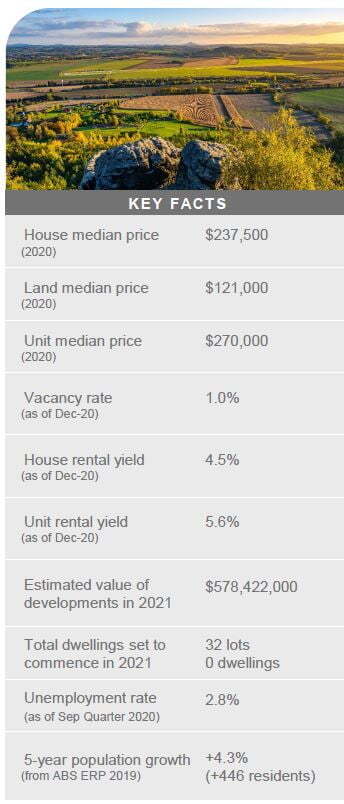Blog post courtesy of our sponsors PRD Albury
Housing affordability is now an issue more than ever, especially within metro capital cities. Regional areas have become the most attractive option throughout 2020, with evidence of buyers capitalising on lower median property prices.
The ‘PRD Stand Out Regions’ report highlights affordable regional areas in QLD, VIC, NSW, and TAS. These areas not only have median price affordability, but also provide strong indicators for property investment, local employment growth, and a sustainable economic future.
5 selection criteria were used to select the top 10 regional areas:
- Affordability – the Local Government Area (LGA) has a median price below the maximum affordable property sale price (average state loan + 20% deposit).
- Property trends – to ensure statistical reliability, the LGA will have 20 transactions or more in 2019 and 2020, with positive price growth within that time period.
- Investment – to ensure solid investment opportunities, the LGA will have an on-par or higher rental yield than its capital city, as well as an on-par or lower vacancy rate compared to its capital city.
- Project development – the LGA will have a high estimated value of future project development, with a higher concentration of commercial and infrastructure projects to ensure a positive economic outlook.
- Unemployment rate – as of the September quarter 2020, the LGA will have an on-par or lower unemployment rate than the state average, to ensure there is local job growth.
Based on the above methodology and selection criteria, the following 10 regional locations were deemed to be ‘stand out regions’; affordable regional areas with solid fundamentals for sustainable future growth:
- Whitsunday LGA | QLD
- Mackay LGA | QLD
- Toowoomba LGA | QLD
- Port Stephens LGA | NSW
- Greater Hume Region | NSW
- Federation LGA | NSW
- Greater Bendigo City | VIC
- Greater Geelong LGA | VIC
- Warrnambool LGA | VIC
- Circular Head LGA | TAS
Below is an extract from the report about our LGA, the Greater Hume Region.
Bordering both Wagga Wagga and Albury, the Greater Hume LGA is a key connecting region for southern NSW, which held an estimated population of 10,764 residents in 2019. Unemployment locally was recorded at a very low 2.8% for the September quarter of 2020, sitting far below the NSW benchmark of 5.7% across the same period.
Over the past decade (2011-2020), Greater Hume LGA has recorded strong median property price growth of +45.3% for houses,+115.5% for vacant land, and +22.7% for units. The last 12 months have proven particularly strong for median house price growth in the Greater Hume LGA, up by +9.1% from 2019-2020. In addition, a strong sales volume of 205 houses sat at a peak for the decade, highlighting strong buyer demand. Greater Hume’s position as a key road network conduit between major regional and capital cities in NSW and VIC provides the necessary basis for sustainable ongoing performance for its property prices.
Investors in the Greater Hume LGA have benefited from solid rental returns, averaging 4.5% for houses and 5.6% for units in December 2020. These levels are well above those found in Sydney Metro for the same period (2.5% and 3.5% for houses and units respectively). In further good news for investors, the vacancy rate in December 2020 was a low 1.0%, well below Sydney Metro’s 3.6% at the same time. Greater Hume LGA’s vacancy rate has consistently continued to trend down over the past two to three years, while Sydney’s has increased. Investors wishing for greater returns and security of cashflow may wish to look into top regional markets such as the Greater Hume LGA.
Throughout 2021, Greater Hume LGA’s development pipeline is worth an estimated $578.4M*. Of this, a large majority (98.1%) is to be spent on commercial projects, with the largest of these being solar farms and associated energy storage. Infrastructure spending of $9.6M* will also contribute positively to creating new and upgraded amenities for locals, while $1.5M* in residential project activity will create a relatively limited new supply of land, totalling 32 lots.



